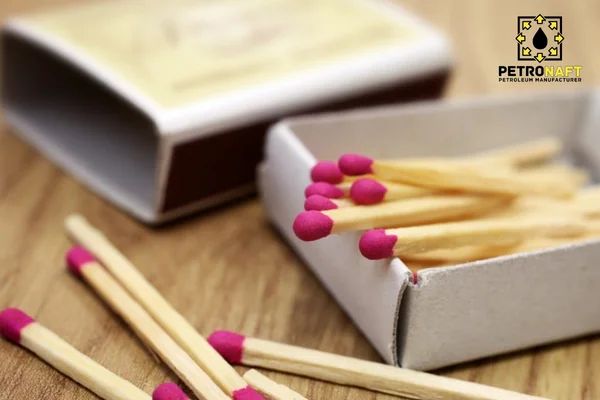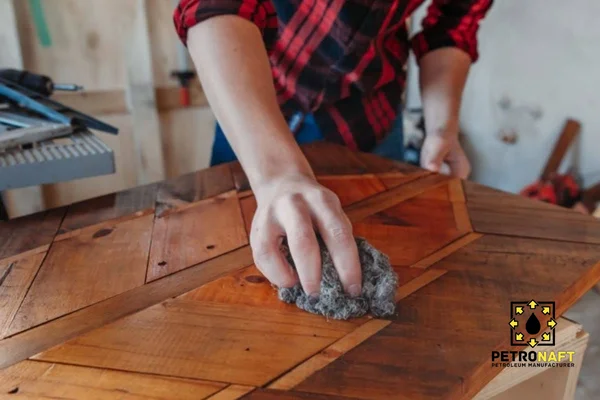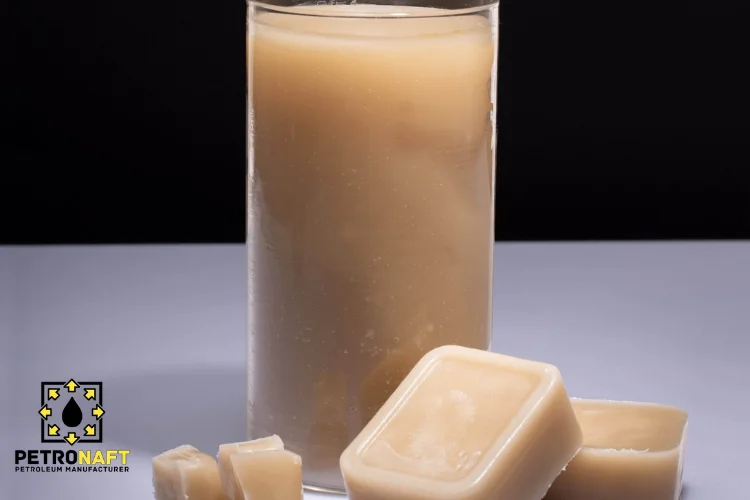Content Overview
The Role of Slack Wax in Paraffin Manufacturing
Slack wax is a crucial ingredient in the production of paraffin wax, which is widely used in various industries, such as cosmetics, pharmaceuticals, and candles. Paraffin wax is derived from petroleum, and its production involves several refining processes, with slack wax being one of them.
In this comprehensive guide, we will delve into the role of slack wax in paraffin manufacturing, the refining process, byproducts, and benefits of this vital ingredient.
Slack wax is a byproduct of the petroleum refining process and is obtained by solvent extraction or cooling the residue left after distilling crude oil. It is a semi-solid wax that contains a mixture of hydrocarbons, ranging from C18 to C50.
In the production of paraffin wax, slack wax plays a crucial role in improving the quality of the final product. It is added to the mixture of heavy and light oils during the refining process to enhance the melting point, hardness, and texture of the paraffin wax.
What exactly is Slack wax?
Slack wax is a petroleum substance that comes in three grades: light, heavy, and extremely heavy. This substance is used to make candles, matches, soil and grass protection materials, waterproofing, perfume, cosmetics, grease, glue, and other products. This substance melts readily and is yellow or brown in hue.
Slack wax is made up of oil extracted from crude oil. Slack wax is categorized from light to heavy according to its melting point. Slack wax is a carbon-alkane combination. This product is used during the paraffin manufacturing process. Slack wax enters the system as a raw material during the paraffin manufacturing process, and following purification, staining, and bleaching, it is turned into various grades of paraffin wax. The oil extracted during the pollution process is referred to as “residue wax.” Loose wax is typically dark and has a fat and oil content ranging from 10% to 35%. Slack wax is available in three weights: extra heavy, heavy, and light. The melting points of Heavy Slack wax are 62-66°C and Light Slack wax are 47-53°C.
Slack wax Application:
Slack wax, unlike paraffin wax, is employed as a compounder or waterproofing agent in the manufacture of industrial items. For example, Unique product is used in candles, emulsions, building boards, matches, rust preventives and moisture vapor insulators, polishes, inks, lubricants and greases, adhesives and sealants, waxes, fuels, fragrances and cosmetics, and personal care items. Slack wax is also used to make carbon paper, dust insulating materials, and controlled release materials for industries. This substance is not flammable according to UN GHS guidelines, but since it includes petroleum, it burns like gasoline.
This product is neither self-reactive nor self-heating, and when heated, it does not undergo exothermic breakdown. At room temperature, it is semi-solid and should be kept away from oxidizing chemicals. Slack wax is mildly poisonous when inhaled, ingested, or comes into contact with the skin of laboratory animals.

Slack wax packaging, kinds, and structure:
Slack wax is a petroleum product that is used as a basic ingredient in paraffin manufacturing. Slack wax is a yellow or brown-tinted petroleum and paraffin combination. Slack wax is often packaged in bulk volumes, IBC tanks, and new steel drums. Used barrels are occasionally used for packing to save money, and sometimes at the customer’s request. After being heated, it is treated with specific powders for paraffin manufacturing.
Different forms of Slack wax are used as a compounder, moisture insulator, and in the manufacture of a variety of industrial items. Unlike completely refined waxes, Slack wax contains 5 to 30 percent petroleum, depending on the formulation. This substance is also used as a byproduct in the manufacture of lubricating oils. In many industrial processes, Slack wax may be employed as a productive force. This product may also be combined, blended, or refined further.
Slack wax and petrolatum, which arise during the dewaxing process, contain considerable quantities of oil. For example, oil accounts for 10 to 30% of the weight of Slack wax. In this context, “oil” refers to a combination of dissolved components at the temperature of filtration. Furthermore, this chemical entirely damages several crucial wax qualities. At high temperatures, Slack wax fractions are pre-crystallized.
Slack wax Deoiling:
These waxes, like paraffin wax, have a low melting point and are mostly made of isoalkanes. Furthermore, all Slack waxes have the same hazardous qualities. As a result, certain ingredients, namely oil and low melting point goods, should be avoided in Slack wax. This is known as deoiling.
Deoiling is the partial crystallization of Slack wax or paraffin based on its melting point. If the final product still has a large melting range, it may be required to perform fractional crystallization in order to get paraffin wax with a low melting range. In this view, deoiling and fractional crystallization are, in this view, two steps of the same process.

Processing of Slack wax:
Cooling and pressing are used to get Slack wax following distillation. This product is solely de-oiled by a technique known as “sweating.” This procedure used to use fractional melting and had a narrower melting range. Today, the oily sections with the lowest melting points are removed first by gradually raising the temperature of solid wax. Following this procedure, the wax becomes richer with a larger melting range and reduced oil content. After sweating, the leftover Slack wax and solid paraffin with a low melting point and little oil are produced.
This procedure is carried out in heated rooms that are set to sweat. Wire gauze is inserted horizontally at one-third or half the height of the pan. For hot and cold-water circulation, tubular coils are often put on the chamber’s roof. Molten Slack wax is poured into the sweat container, where it cools to below the melting point in the top section of the container.
Light grade Slack wax with 10% oil content:
A light-grade Slack wax with a 10% oil concentration is just that. This material melts readily and is light yellow or brown in appearance. One of the benefits of this grade of Slack wax is that it has a melting point of roughly 57 degrees Celsius. Light grade Slack wax is a refinery product that was formerly thought to be petroleum waste. However, there are numerous orders for these goods on the market right now. Light grade Slack wax is a paraffin wax and petroleum combination. Light grade Slack wax is used as a raw ingredient in numerous products, the most important of which being paraffin wax.
Light grade Slack wax with 10% oil content may be used for the following purposes:
With two DE-coloring and DE-oiling procedures, light-grade Slack wax with 10% greater oil content is utilized to generate various classes of paraffin wax. Matches are also made using light-grade Slack wax with a 10% oil content. This substance is utilized in the production of huge candles. Slack wax is a raw wax made by cooling and distilling filtered and squeezed paraffin.
There are three varieties of Slack wax manufactured across the globe, the type of which is determined by the viscosity of the lubricating oil. In the DE-wax process, viscosity is characterized as low neutral, medium neutral, or heavy neutral. Cold regions need a lighter Slack wax with a lower melting point.
Slack wax grade is light and has 10% higher oil content than regular wax. It is utilized in paraffin emulsions as well as as an adhesive and waterproof substance in fake wood. This light grade substance is commonly used in heating items, as well as in matches, candles, anti-rust products, industrial lubricants, soil protection, and even surfing.
Slack wax package with a 10% oil content:
Light grade Slack wax with a 10% oil content is packaged in 180 kilograms new or used drums, ISO tanks, or flexi tanks. Each 20-foot container can hold 110 Slack wax barrels. ISO and flexi tanks can hold up to 20 tons of cargo. Some clients, particularly Europeans, want ISO tanks with warming equipment for simple unloading at their facility; nevertheless, this sort of packing will increase the cost per MT.
Purchasing from Petro Naft
For more detailed information and to purchase the product discussed in this article, please visit the dedicated product page below. Alternatively, use the various communication channels provided on our site to register your purchase inquiry or take advantage of our expert guidance.
Slack Wax (Heavy and Light Slack Wax)
Prepared by the PetroNaft Co. research team.



